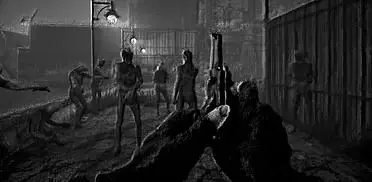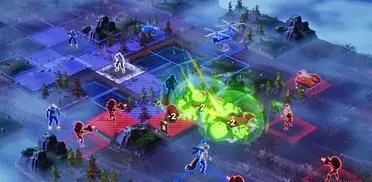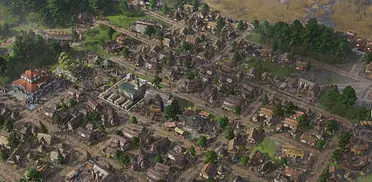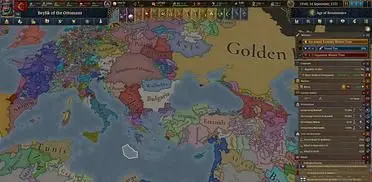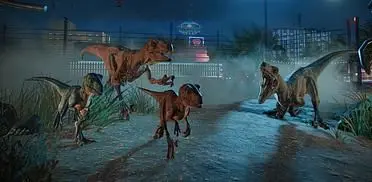There’s plenty to do on your own in ESO, stress Bethesda. Traditional MMO roles are ”still important” even with ESO’s ”open-ended skill system” mixing it up. Roles can be changed ‘on the fly’.
Bethesda didn’t want to lock players into specific roles with little wiggle room as they know how restrictive that can be, especially when players are looking for groups.
Tanking, healing, DPS, etc.: ”These roles are still important for a successful dungeon group in The Elder Scrolls Online, but our open-ended skill system gives you much more flexibility. With the right combination of weapons and abilities, you can change your role on the fly to support your group’s needs,” blogs Bethesda.
An example they provide is when a group’s healer falls, which is usually time to panic in most MMOs - not so in ESO.
”…you were prepared for just such a situation! You swap your two-handed sword out right in the middle of combat for a restoration staff, which activates your second hotbar (where you’ve cleverly slotted some healing abilities). Now, you can keep the party going.”
The studio has clumped together a bunch of tips to mark the differences in ESO, and have broken the down into the typical roles we find it MMORPGs:
DPS
• Monsters will attack you. Don’t panic, and don’t expect your tank to handle every enemy alone. You have a great toolbox to mitigate damage—you can interrupt, block, and dodge while dealing damage.
• Focusing on one enemy at a time is helpful. Coordinate with your group and try to damage the same enemy, then move on to another. The longer the fight goes on, the more danger your party is in of running out of magicka and stamina.
• Area of Effect (AoE) abilities are effective, but can be very dangerous. When you damage multiple enemies at once, you risk getting their attention and straining your healer. Be cautious when employing AoE attacks.
• Be careful with your attacks! Avoid attacking monsters in the back lines of a pack (more details in the next section). Even getting too close to them can cause them to engage in the fight and threaten to overwhelm your party.
Healing
• Make sure your party has at least one player that can heal the group. The more players that bring healing abilities, the less need there is for a dedicated healer. Coordinate with your group—you might even find that, with the right abilities, each player can manage his or her own health.
• Magicka potions can be a great boon, but make sure you choose when to use them carefully. Potions cannot be used in quick succession.
• The tank won’t be the only party member taking damage. This is intended, and you will need to watch the other party member carefully.
• You’ll take damage, too! Remember that you can interrupt, block, and dodge. Crowd control abilities that stun, slow, or otherwise incapacitate enemies can be extremely useful for healers, and so can damaging abilities.
Tanking
• You won’t need to get every enemy’s attention. Every player can take a few hits from standard attacks, and they have lots of ways to take care of themselves. Many healing abilities affect an area, so your healer (if you only have one) should be able to take care of several party members.
• In a fight with a large group of enemies, a tank’s ability to control the fight is critical. Stun the healers, interrupt the spellcasters—you’re the best party member for the job, because your stuns and interrupts will tend to get those enemies to attack you back.
• You do need to stay engaged with tougher monsters, like bosses. They hit much harder, and your damage mitigation and extra health will keep you alive where other characters might die.
As for monster behaviour in those dungeons, Bethesda also give us a rundown. They wanted to do away with a lot of the usual threat-based system when it comes to enemy encounters, but also recognised a certain degree of it needed to remain. Bethesda also want us staring less at the UI.
• Enemies in any room in a dungeon are all aware of each other. When one is attacked, the others are alerted and prepare to fight back. We call this “pack mentality.”
• By default, a pack of monsters spreads out, and each enemy chooses a target. Player actions can change their targets to some extent. For example, taunt abilities force an enemy to attack you for a fixed duration. Attacking an enemy that hasn’t been attacked recently can also cause its focus to switch to you.
• Pack monsters don’t all attack at once. Some immediately join the fight, but others prepare in the back lines before moving in. If you get too close to backline enemies, or if you attack them, they’ll join the battle.
• In general, enemies target the closest player that is attacking them. If they aren’t being attacked, different enemy types choose targets differently. For example, a ranged enemy is more likely to target a ranged player than a melee enemy is.
Bethesda want the dungeons in ESO to be among the toughest challenges you can undertake in groups. Much like other MMOs, the dungeons are instanced to each group that enters ensuring you can keep your loot. Read more here.



